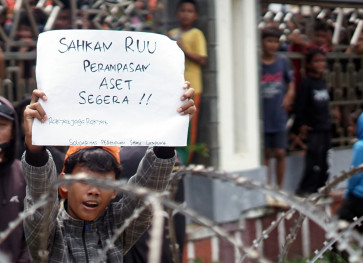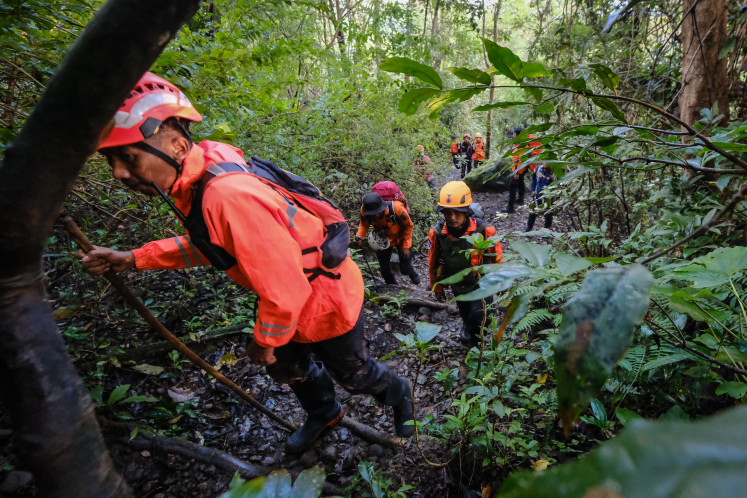Popular Reads
Top Results
Can't find what you're looking for?
View all search resultsPopular Reads
Top Results
Can't find what you're looking for?
View all search resultsOutput to be boosted as RI moves beyond rice
The government will accelerate the production of cassava because it is believed the crop can alleviate challenges such as food and energy shortages
Change text size
Gift Premium Articles
to Anyone
T
he government will accelerate the production of cassava because it is believed the crop can alleviate challenges such as food and energy shortages.
The Agriculture Ministry's post-harvest director Pening Dadih Permana said on Wednesday that the ministry was currently putting together a strategy for the 2015 to 2019 period, which includes expediting production of several strategic commodities including cassava.
'The ministry is focusing on the development of bio-industrial farming, which can produce food and energy,' Dadih said, adding that cassava could be converted into bioethanol.
To accelerate cassava production, the Agriculture Ministry would expand cassava's crop acreage, improve farmers' cultivation techniques and control food imports, he added.
Indonesia is still relying on rice as its staple food, but declining production since the self-sufficient era in the early 1980s has prompted the government to develop other food sources.
'Indonesia has the potential [to develop other food sources],' Dadih said, adding that cassava, with its many advantages, might be
the answer.
The Indonesian Cassava Community (MSI) chairman Suharyo Husen said that one of the advantages of cassava was that its cultivation was easy. 'Besides already being familiar to Indonesians, the cultivation of cassava is very easy,' he added.
Achmad Subagio from PT Tiga Pilar Sejahtera Food research department said that cassava could even be planted on sand.
'I've tried to plant cassava on around 3,000 hectares of sand in Jember and Lumajang and it surprisingly worked,' he said.
Cassava also had a very high productivity rate compared to paddy, according to Subagio. 'Around 23.5 million tons of cassava were produced from harvest areas of 1.2 million hectares, while 13 million hectares of paddy fields could only produce 65 million tons of rice,' he added.
Demand for cassava reached 60 million tons per year, Husen said, but production only reached 23.6 million tons last year, according to data from the Central Statistics Agency (BPS). That was a decline from 2012, where production reached 23.8 million as harvest areas also decreased to 1 million hectares last year from 1.1 million hectares the previous year.
Dadih said that there were several obstacles in the development of cassava's production and consumption. 'The lack of quality seeds and harvest areas are just some of the hurdles. The price of flour made from cassava is also less competitive compared to the price of wheat flour,' he added. In addition, according to Subagio, there is also a stigma that cassava is food for the poor. (ask)










